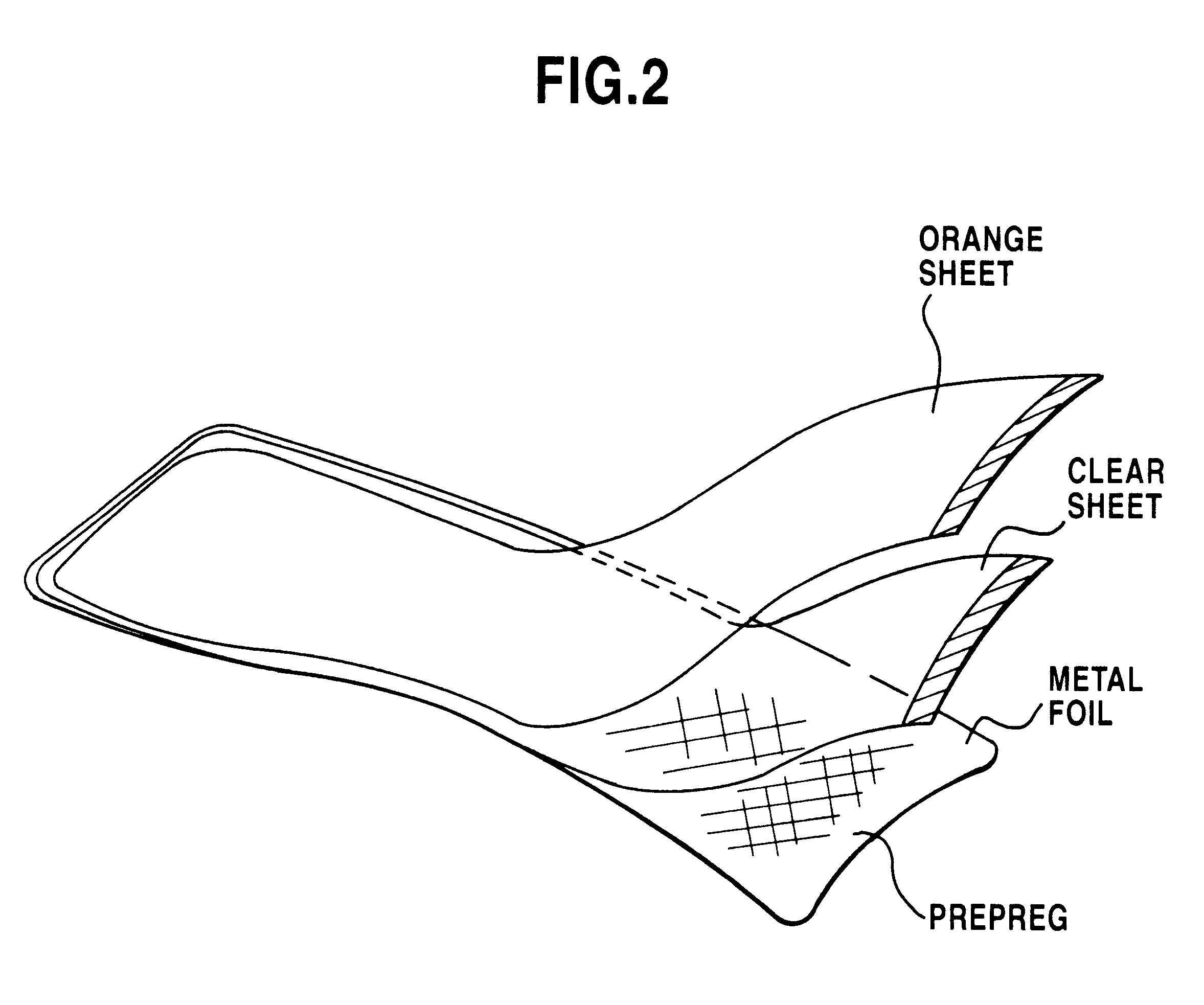Prepreg
a technology of pre-preg and pre-treatment, which is applied in the field of pre-preg, can solve the problems of insufficient pre-preg treatment, insufficient pre-preg treatment, and insufficient pre-preg treatment, and achieve the effect of eliminating the polymerization of pre-preg and reducing the fraying of fibres during handling
- Summary
- Abstract
- Description
- Claims
- Application Information
AI Technical Summary
Benefits of technology
Problems solved by technology
Method used
Image
Examples
example 2
Preparation of the Prepreg From the Polymer Preimpregnated Fibres
A polymer preimpregnated (third matrix component) prepreg prepared according to Example 1 in WO 96 / 25911 was pultruded through a liquid of monomers of BISGMA-TEGDMA (first matrix component) which contained all of the chemicals required for photoinitiation of polymerization. The subsequent pultrusion stage was made through liquid of solvent THF and dissolved PMMA molecules (second matrix component) which formed the gel membrane. The packing was made as described in the Example 1.
example 3
Preparation of the Prepreg With Additional Bioglass Particle Surface
The fibre prepreg fabricated as described in Example 1 or 2 was pultruded through liquid of solvent THF and dissolved PMMA molecules to form the gel membrane for the prepreg. Before drying the gel, the prepreg was powder-coated with small particles of bioactive glass (particle size of 10-50 microns) which adhered to the surface of the prepreg during drying.
The following Examples describing the use of the prepreg refer to any of the prepregs described in the foregoing Examples 1 to 3.
example 4
The Use of the Prepreg in Fabrication of Periodontal Splint
The desired length of the prepreg was cut with scissors, the tooth enamel was etched with phosphoric acid and the normal dental bonding agents were used. The prepreg was then pressed againts to the tooth by hand instruments with or without the aluminum foil package, and the prepreg was light-cured with a normal dental light-curing unit. The polymerized prepreg was bonded to the dental bonding agents which are dimethacrylate resins via IPN-layer formation of the thermoplastic phases of the prepreg and by radical polymerization of unreacted carbon--carbon bonds of the prepreg and dental bonding agent monomers. In the same way the prepreg could be used as periodontal splints which were placed into the cavities of teeth.
PUM
| Property | Measurement | Unit |
|---|---|---|
| particle size | aaaaa | aaaaa |
| molecular weight | aaaaa | aaaaa |
| time | aaaaa | aaaaa |
Abstract
Description
Claims
Application Information
 Login to View More
Login to View More - R&D
- Intellectual Property
- Life Sciences
- Materials
- Tech Scout
- Unparalleled Data Quality
- Higher Quality Content
- 60% Fewer Hallucinations
Browse by: Latest US Patents, China's latest patents, Technical Efficacy Thesaurus, Application Domain, Technology Topic, Popular Technical Reports.
© 2025 PatSnap. All rights reserved.Legal|Privacy policy|Modern Slavery Act Transparency Statement|Sitemap|About US| Contact US: help@patsnap.com



